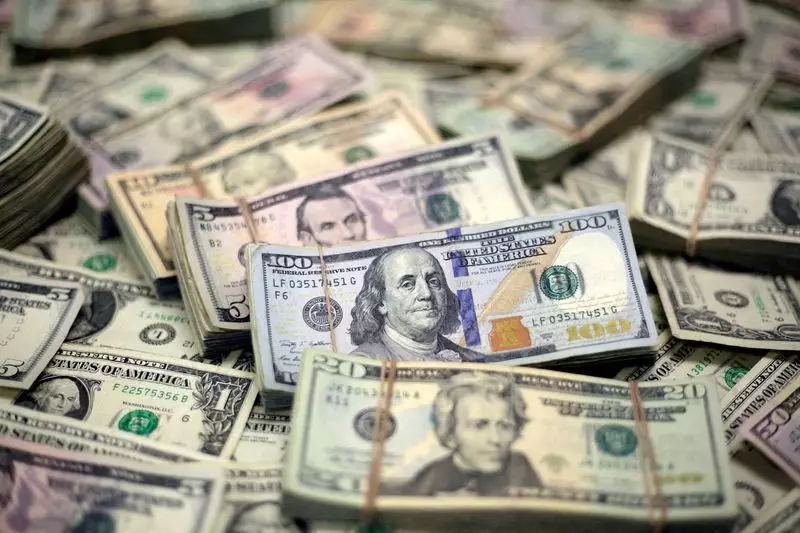In the intricate world of foreign exchange, the dynamics of currency values are influenced by a myriad of factors, ranging from central bank policies to geopolitical events. As of Tuesday, the U.S. dollar finds itself at a two-month peak against major currencies, reflecting speculators’ expectations regarding upcoming Federal Reserve actions. This rise is particularly significant as the currency approaches key psychological thresholds against others like the Japanese yen, while simultaneously responding to shifts in macroeconomic indicators and central bank communications around the globe.
The American economy has showcased a notable degree of resilience, surprising many analysts with its capacity to withstand pressures from inflation and global uncertainties. Recent data has hinted at a modest tapering in growth instead of a steep decline. Coupled with reports that inflation increased slightly beyond expectations in September, traders are recalibrating their strategies. The anticipation of a 25 basis point cut in November, which is now deemed a near certainty with an 89% probability, has incentivized dollar buying.
Fed Governor Christopher Waller’s remarks on exercising “more caution” regarding interest rate cuts further supported this bullish sentiment in the dollar. His view on a gradual reduction of the policy rate over the coming year indicates a calculated approach rather than a rushed pivot to easing, which traders appreciate. This caution is particularly timely as disruptions caused by recent hurricanes and labor strikes threaten to skew upcoming employment figures, potentially erasing significant job additions from the market’s perception.
Meanwhile, the yen’s depreciation relative to the dollar signals pronounced shifts in Japan’s monetary policy landscape. The yen hovered around 149.55 per dollar, a value inching closer to the psychological barrier of 150, which had been reached on August 1. The narrative around Japan’s monetary policy has turned dovish, especially in light of statements from Bank of Japan Governor Kazuo Ueda and emerging resistance to interest hikes from the new Prime Minister, Shigeru Ishiba. Such developments paint a picture of uncertainty concerning Japan’s future economic tightening, prompting traders to favor the dollar.
Conversely, the euro remains relatively stable, yet it finds itself close to a low not seen since August. The anticipation surrounding the upcoming European Central Bank (ECB) meeting stirs speculation that another rate cut could be on the horizon, influencing euro valuation. As the euro trades around $1.0908, traders remain apprehensive, straddling caution with hopes of a supportive policy draw from the ECB.
As the foreign exchange markets react to internal changes within respective economies, external fiscal measures also play a critical role. The Chinese government’s potential plans to issue an additional 6 trillion yuan in treasury bonds—conceptualized to inject fiscal stimulus into an economy grappling with slow growth—has fostered a mindset in markets that further stimulus is imminent. These developments could have ripple effects, drawing investor attention to the play between the yuan and other currencies amidst hopes for China’s economic recovery insights revealed during the National People’s Congress standing committee meeting.
The tug-of-war between various currencies intertwined with local and global economic narratives underscores the volatility present in the current financial climate. The Australian and New Zealand dollars displayed minor fluctuations, reflecting broader trends without significant disruptions.
With the dollar index sitting at 103.18, close to highs not seen since early August, the outlook for the U.S. dollar remains cautiously optimistic. The convergence of economic resilience, federal policy signals, and international economic strategies will continue to influence currency trading. As markets await the forthcoming non-farm payrolls report, the potential distortions from recent disruptions may lead to a turbulent atmosphere for traders. Nevertheless, the prevailing sentiment appears to favor dollar strength in the face of increasing global economic narrative complexities.
While the dollar is experiencing noteworthy gains, the delicate interplay between domestic indicators and international responses will dictate future movements. Investors are urged to monitor economic releases closely, as they hold the key to understanding possible currency trajectories in a rapidly evolving landscape.

